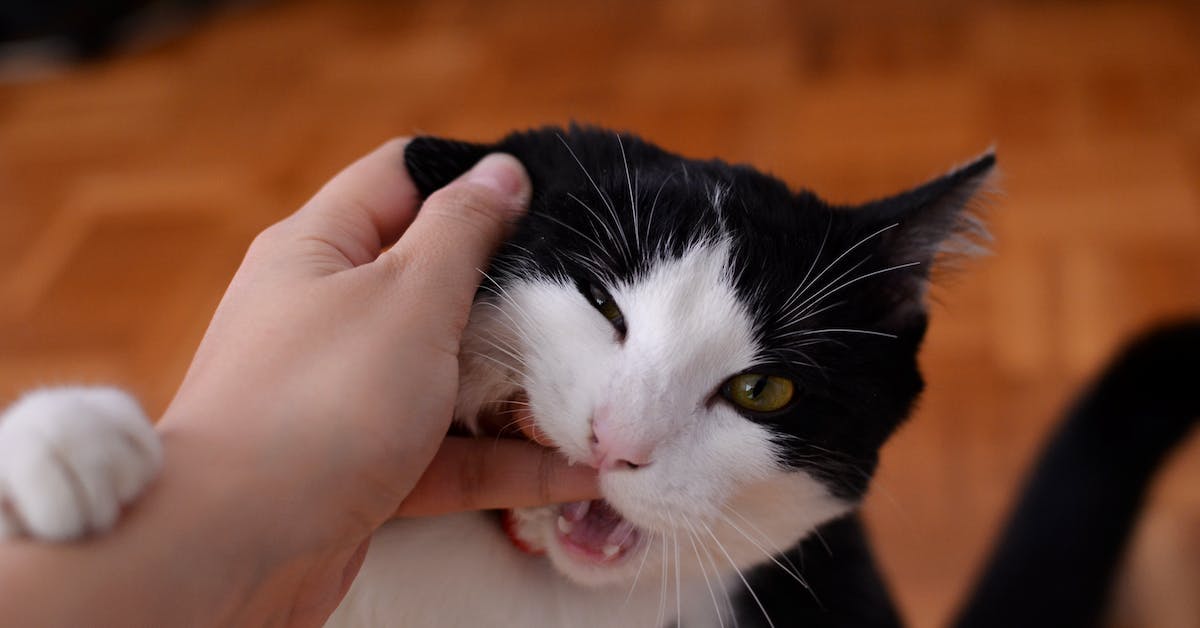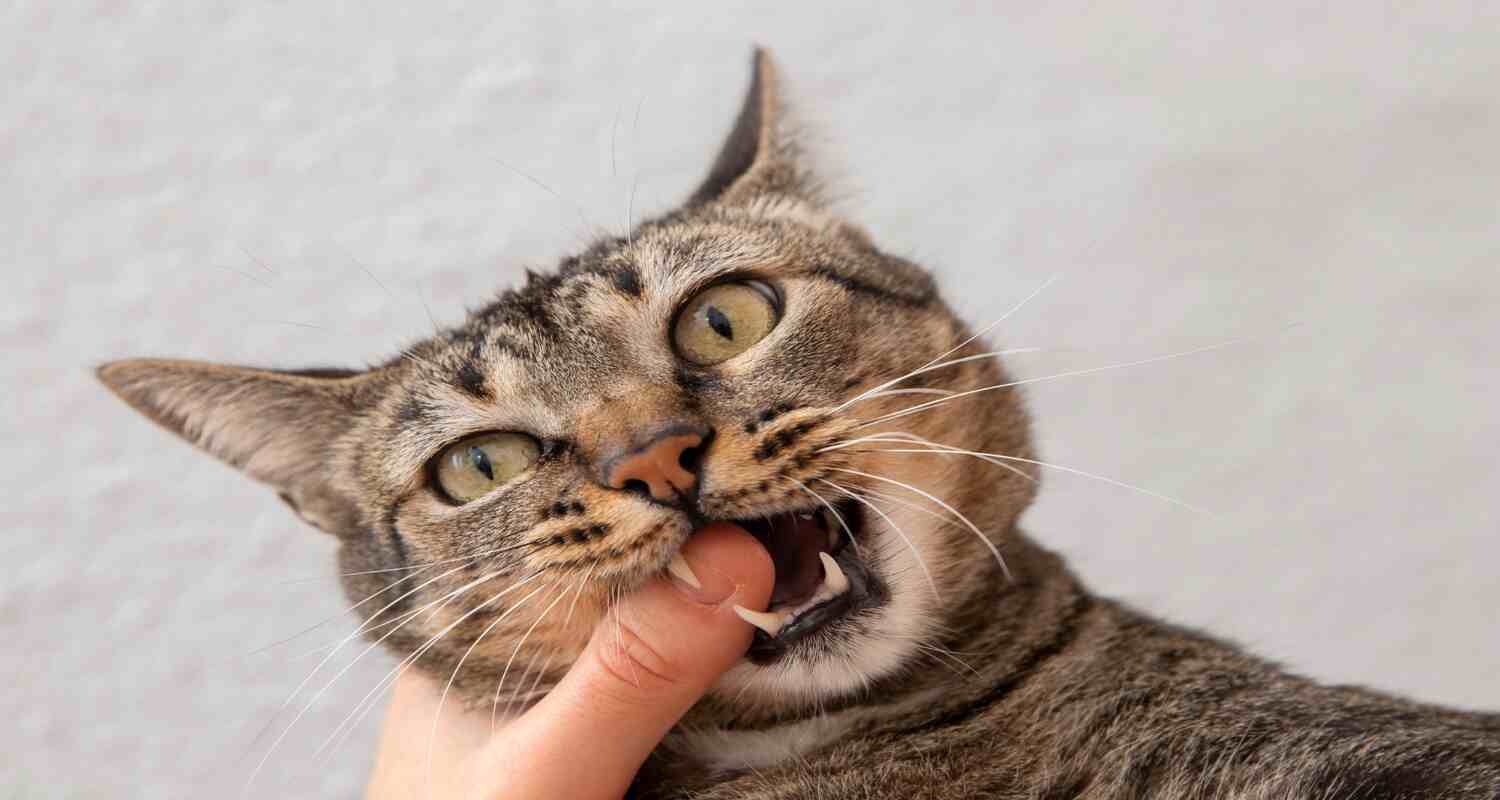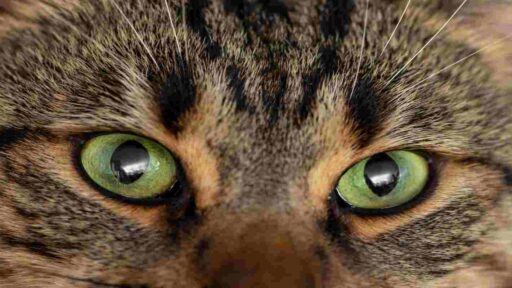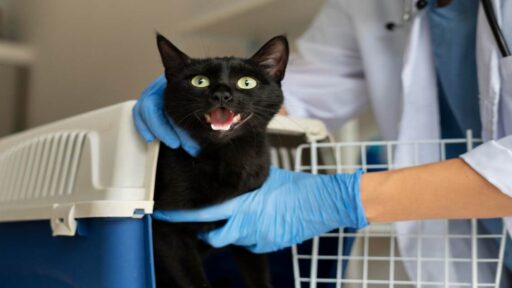Cats, mysterious and independent creatures, have a unique way of communicating with their human counterparts. One common behavior that often perplexes cat owners is the combination of biting and licking. In this article, we’ll delve into the reasons behind this curious feline conduct (Why Does My Cat Bite Me Then Lick Me?) and explore ways to understand and address it.
Understanding Cat Communication
Cats communicate not only through vocalizations but also through body language and actions. Biting and licking are two such behaviors that convey a multitude of messages. To decipher this feline code, it’s crucial to understand the motivations behind these actions.
Reasons Behind Cat Biting

Playful Behavior
Cats often engage in play by using their mouths. Playful biting is a natural instinct, and understanding the difference between play and aggression is key.
Territorial Instincts
Cats are territorial creatures. Biting may be a defense mechanism or a way for them to establish boundaries.
Overstimulation
Cats, like humans, have limits to their tolerance. Overstimulation can lead to biting as a means of communication.
The Dual Nature of Cat Licking
Grooming and bonding are two primary reasons behind cat licking. While grooming is a self-maintenance behavior, licking can also signify affection and bonding. Distinguishing between the two helps in interpreting your cat’s intentions accurately.
Misinterpretations: Human vs. Feline
Humans might misinterpret cat behavior due to differences in communication styles. It’s essential to bridge the gap by learning to read and respond to feline cues effectively.
Playful Biting: A Cat’s Natural Instinct
Understanding that biting is a part of a cat’s play is crucial. Providing appropriate outlets for play, such as interactive toys, can redirect this behavior positively.
Territorial Behavior: Establishing Boundaries
Creating a cat-friendly environment and understanding your cat’s need for territory can help manage territorial aggression. Providing separate spaces for multiple cats can prevent conflicts.
Overstimulation: Knowing Your Cat’s Limits
Recognizing signs of overstimulation, such as dilated pupils or aggressive tail movements, can help prevent biting incidents. Creating a calm environment and giving your cat space when needed are essential.
Deciphering the Language of Cat Licking
While grooming is a natural behavior, licking can also express affection. Pay attention to your cat’s body language and vocalizations to interpret whether licking is a sign of bonding.
Addressing Undesirable Biting
Training techniques, such as positive reinforcement and redirection, can discourage unwanted biting. Seeking advice from a professional behaviorist may be necessary for persistent issues.
Enhancing Bonding Through Mutual Understanding
Building trust and understanding your cat’s preferences contribute to a strong human-feline bond. Spend quality time with your cat, respecting their boundaries, and offering positive interactions.
Cat Body Language: Reading the Signs
Learning to read your cat’s body language, including tail movements and ear positions, enhances communication. Recognizing vocalizations and understanding their context enriches the connection between you and your feline companion.
Common Myths About Cat Behavior
Dispelling myths surrounding cat aggression is essential for responsible cat ownership. Educate yourself and other cat owners to promote a better understanding of feline behavior.
Decoding the mystery behind why cats bite and then lick involves patience, observation, and a willingness to understand feline communication. By recognizing our cats’ natural instincts and behaviors, we can foster a deeper bond and create a harmonious relationship with our feline friends.
Read about the cat’s headbutt
FAQs (Frequently Asked Questions)
Q: Is it normal for cats to bite during play?
Absolutely. Playful biting is a natural behavior for cats. It’s crucial to differentiate it from aggressive biting and provide appropriate outlets for play.
Q: How can I prevent territorial aggression in my cat?
Creating a cat-friendly environment with designated spaces for each cat can help prevent territorial conflicts. Providing ample resources like food and litter boxes is also essential.
Q: Should I be concerned if my cat licks me too much?
Not necessarily. While excessive licking can indicate stress or health issues, most often, it’s a sign of affection. Monitor your cat’s overall behavior for any signs of distress.
Q: Are there specific training methods to stop unwanted biting?
Positive reinforcement, redirection, and consistency are key in training a cat to curb unwanted biting. Seek professional advice if behavioral issues persist.
Q: Can misinterpreting cat behavior lead to aggression?
Yes, misunderstanding feline cues can lead to conflicts. Learning to read your cat’s body language and responding appropriately is crucial for a positive human-feline relationship.
read more about cats’ behaviors




